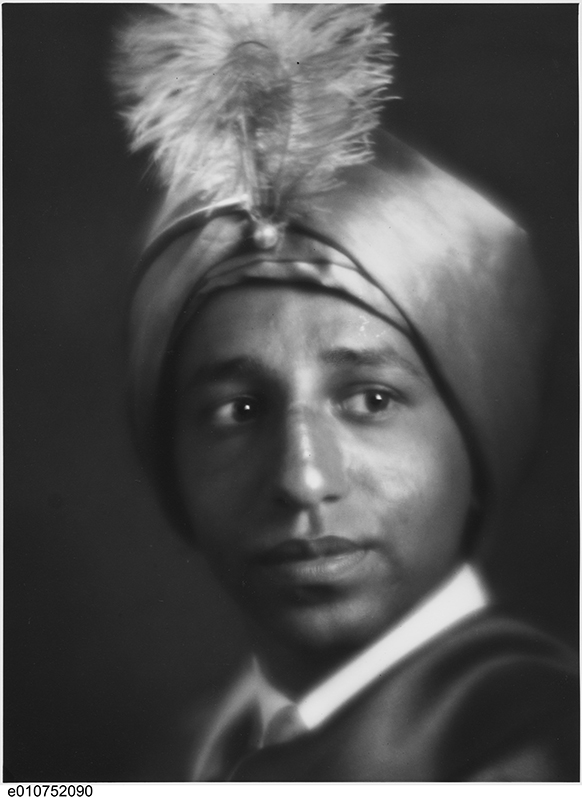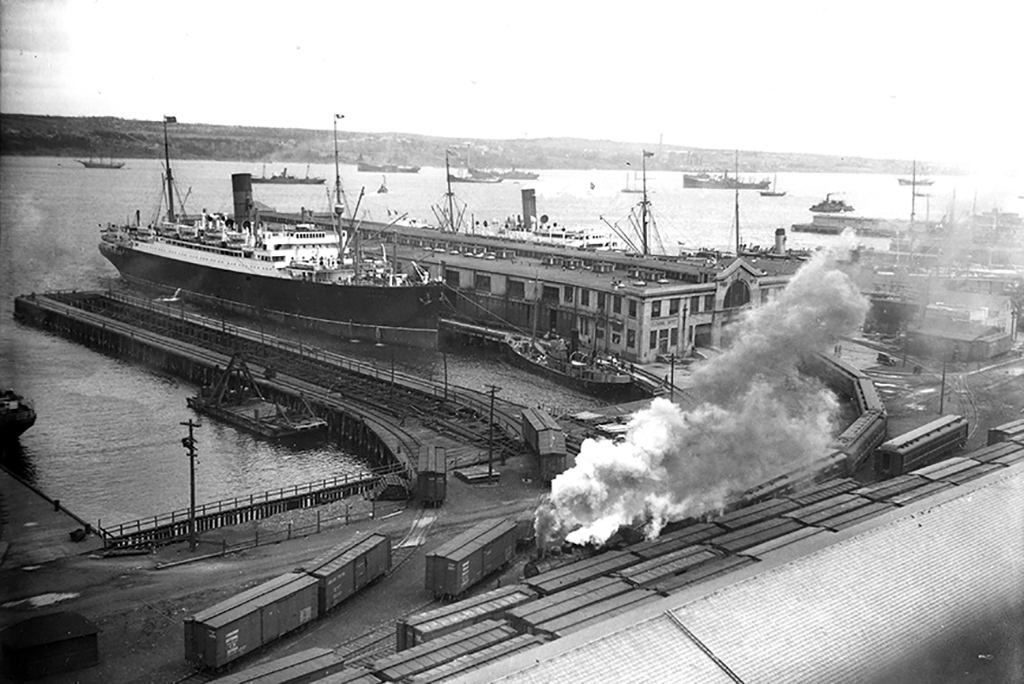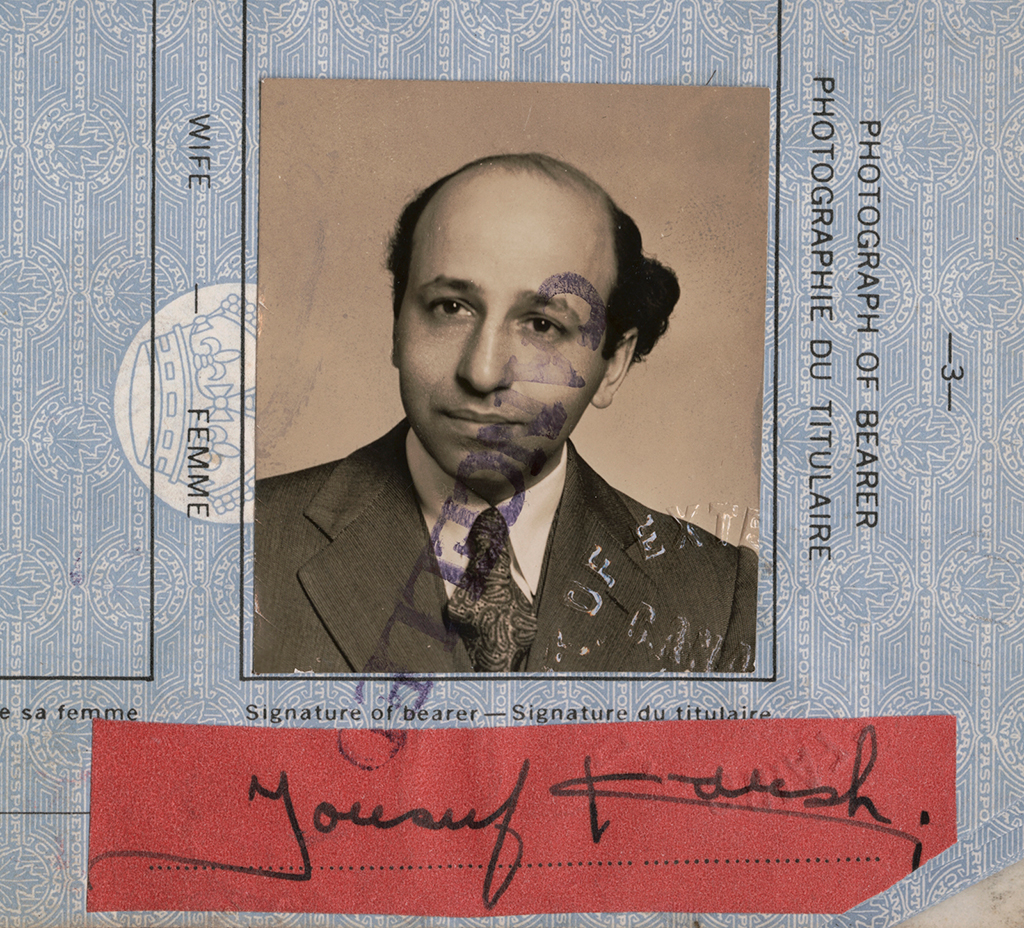
Credit: Yousuf Karsh wearing a turban/Library and Archives Canada/Yousuf Karsh fonds/e010752090
What does one of the 20th Century’s greatest portrait photographers have to do with the Canadian Museum of Immigration at Pier 21?
On March 12, The World of Yousuf Karsh: A Private Essence opened here at the Museum. The exhibition, organized by the Montreal Museum of Fine Art in collaboration with our own institution, is on display for a limited time. It includes over 100 masterful portraits of well-known figures of the twentieth century; Karsh captured iconic images of people like Muhammad Ali, Helen Keller, Glenn Gould, Jacqueline Kennedy, Winston Churchill, Martha Graham, and Nelson Mandela.
But what does this have to do with Canadian immigration? And what does it have to do with Halifax?
Yousuf Karsh was Armenian, born in a community targeted by the Ottoman Empire for genocide during and after the First World War. More than six hundred thousand Armenians were killed by violence, deprivation, and disease as they were relocated to deserts in what is now Syria and Iraq. Canada admitted just 1,250 Armenian refugees between 1919 and 1930, including 148 Armenian orphans.
Generally, Canadian immigration officials refused Armenian refugees, whom they perceived as Asian and undesirable according to racist thinking of the times. Officials argued that easing restrictions, even for humanitarian reasons, might open the doors for other Asian groups.
However, some refugees qualified for admission even with the restrictions. Having relatives in Canada, as Karsh did, could help meet entry requirements.

Credit: Nova Scotia Archives (1928 - WR MacAskill - 1987-453 No 2625)
Barely 15 years old, Karsh arrived at Halifax’s Pier 2 (the city’s immigration shed prior to Pier 21’s opening in 1928) on January 1, 1924, aboard the SS Canada. He had travelled alone.
The teenager was detained for three days while his immigration papers were sorted out.
His uncle George Nakash from Sherbrooke, Quebec, had sponsored Karsh and came to meet him. Karsh never forgot the snowy sleigh ride from Pier 2 to the train station as he began his life in Canada. Uncle Nakash encouraged Karsh to apply for naturalization soon after. This step gave Karsh a welcome sense of belonging.
In 1947, when Canada’s new Citizenship Act came into effect, the government decided to formally confer citizenship on one representative for each province. Karsh was chosen to represent Ontario and so had the honour of becoming one of Canada’s first official citizens.

Credit: Yousuf Karsh Passport/Library and Archives Canada/Yousuf Karsh fonds/e011310780
Speaking at the first Canadian citizenship ceremony in 1947, which included Karsh, Prime Minister Mackenzie King declared: “To be a citizen of Canada is to hold a passport which will be honoured everywhere.” Karsh’s passport is on display at the Museum as part of the exhibition, on loan from Library and Archives Canada. Throughout his career, Karsh travelled the globe to photograph the era’s most influential figures, but he would never return to his birthplace.
This special exhibition will be in Halifax, the place of Karsh’s Canadian arrival, until October 16. During this period, many of our other programs are taking inspiration from the exhibition. The upcoming third season of our podcast, Countless Journeys, is about the stories of artist-immigrants, and our incoming Artist-in-Residence’s project draws from Karsh’s approach. Throughout the Museum, there is inspiration to be found, both in Karsh’s body of work and his life story.
This exhibition is organized by the Montreal Museum of Fine Arts in collaboration with the Canadian Museum of Immigration at Pier 21. The Halifax exhibition is supported by Fred and Elizabeth Fountain.